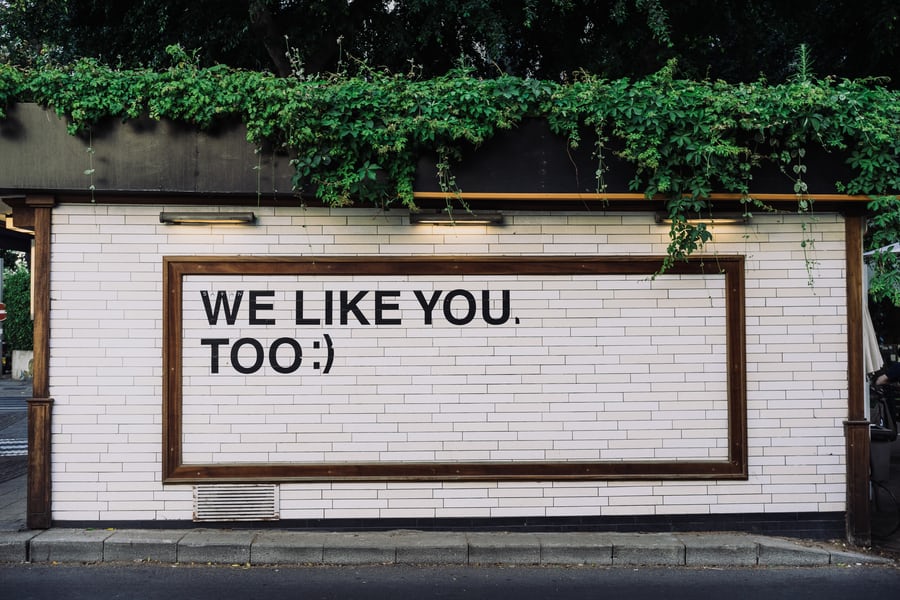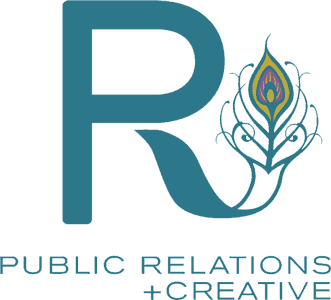Nashville
Earned Media vs Paid Media (and Why You Need Both!)
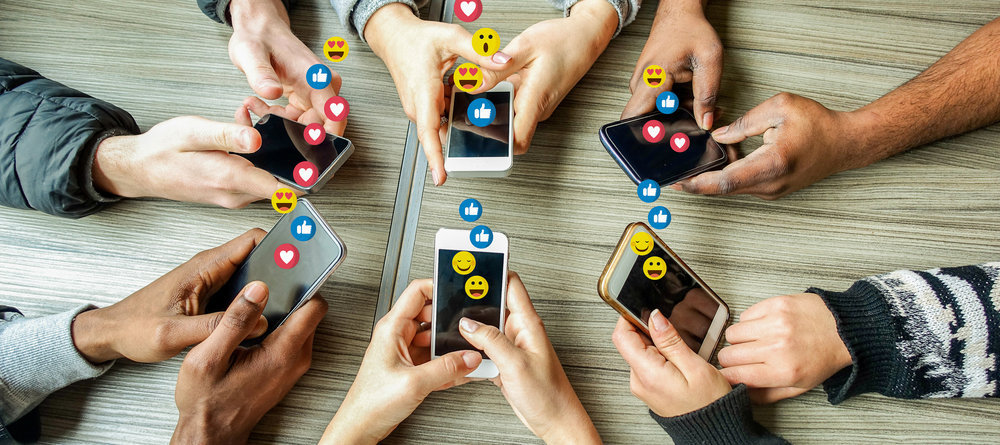
When it comes to cultivating a positive reputation for your brand, promoting your products, services or events and keeping your name top-of-mind in the media, success hinges on the right mix of public relations. That’s right, public relations or PR, isn’t as cut and dry as you may think. There are actually different types of PR – specifically, earned media and paid media – and each uses different strategies to help you achieve your goal. When should you use earned media vs paid media? R approach is to use both. Here’s how the mix benefits your brand.
Earned Media vs Paid Media
First, let’s define each. Earned media is likely what you typically think of when it comes to PR and it includes:
- Mentions in the news as well as reviews
- Positive comments from customers on social media
- High organic rankings on search engines
This word-of-mouth PR is the best type, but it’s also the hardest to achieve. As the name says, you have to earn it through hard work on your end by creating exceptional customer experiences and on R end through expertise in social media strategy as well as content development plus the relationships we nurture and develop with media contacts.
Paid media is exactly as it sounds; paying to make your brand more visible through:
- Social media advertising
- Influencer marketing
- Pay-per-click (PPC) advertising
This is becoming increasingly popular as a way to supplement earned media because you have more control and can target the specific audience(s) you want to get your brand in front of. But again, having the right expertise in these areas is crucial to keep you on point and on budget.
Achieving the Right Mix
Unfortunately, there’s no set formula that can tell you how much earned media vs paid media is necessary to achieve your goals. Both have their own pros and cons.
Earned Media Pros
- Increased credibility
- Heightened brand awareness
- Expanded reach
Earned Media Cons
- Considerable time and effort
- Can be difficult to measure
- Running the risk of negative publicity too
Paid Media Pros
- Control over your message and targeting
- Easy to measure
- Quick results
Paid Media Cons
- Can be costly
- Lacks the credibility of earned media
- Managing multiple platforms can be challenging
To achieve the right mix for your brand, you have to balance the pros and cons of each type of PR with your own resources, budget and goals.
R Team Can Help
R team has the PR expertise in both earned media and paid media, and experience in industries such as restaurant, hospitality, retail, health and wellness, business, non-profit to help you determine just the right mix for your brand. It all starts with a discovery call where we take the time to get to know you, your brand and your goals firsthand. From there we’ll create a proposal with a customized service outline with the earned media and paid media balance that gives you the greatest PR benefit.
Click HERE to schedule a FREE Discovery Call today!
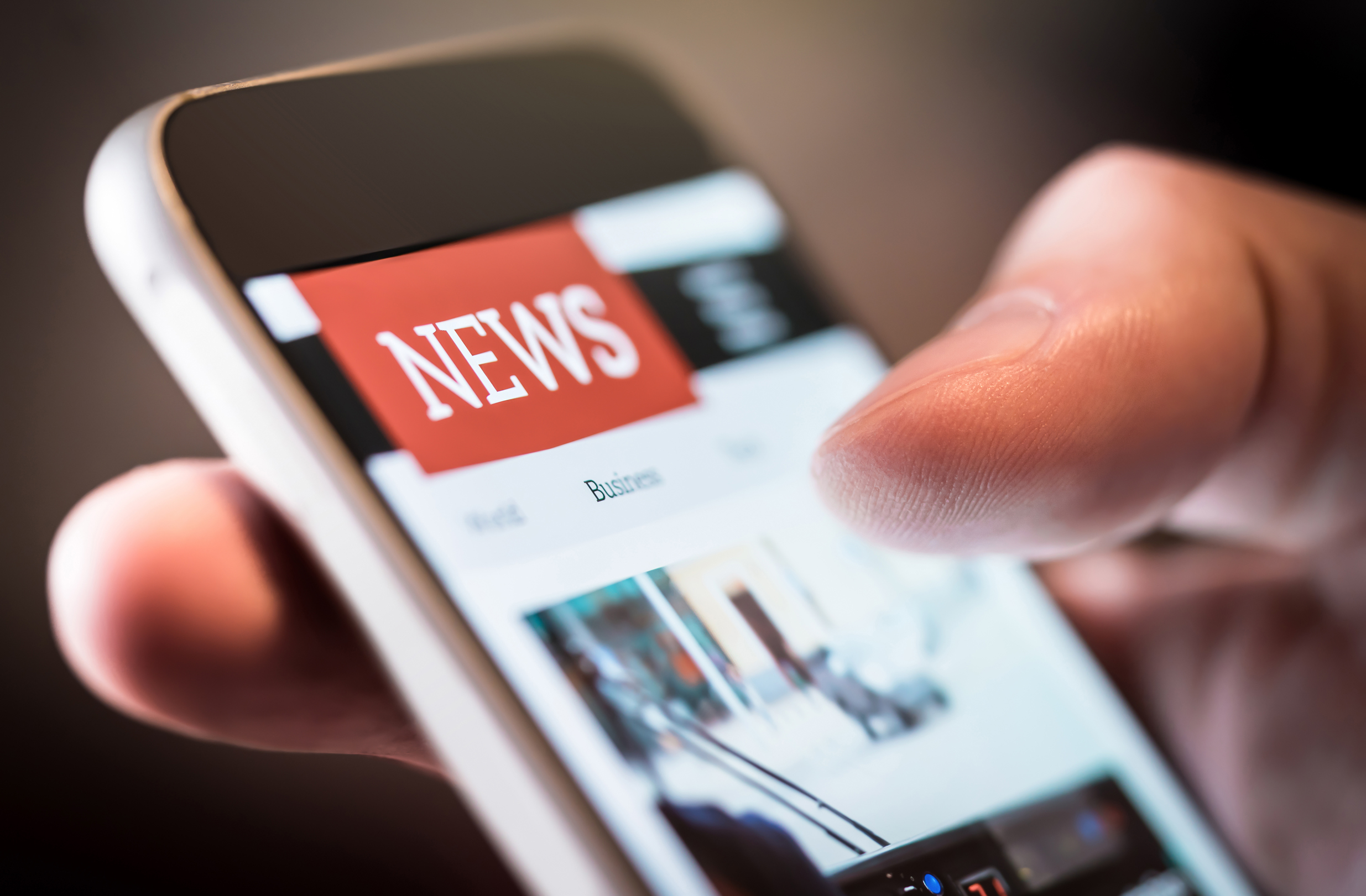
Is PR Too Pricey? R Common Cost Questions Answered

With public relations (PR) services, there can be a bit of a learning curve when it comes to pricing AND value. The saying “you get what you pay for” certainly holds true here as PR can offer tremendous benefits to your brand. But before we get to that, we’ll answer some of our most commonly asked questions about the cost of PR.
What is a PR retainer?
A PR retainer is a lump sum that you pay to the public relations agency or professional each month for their work. The amount paid depends on how much work you need to meet your PR goals and your budget, so it’s important to specific about both in your preliminary communications. Traditionally the cost of PR retainers can be from $1,500 to $10,000 a month, depending on the scope of work and project/client needs.
How much do PR agencies charge hourly?
Large PR agencies may charge upwards of $500 an hour for their time. However, smaller agencies or consultants may charge as little as $125 an hour. The average hourly rate at a larger PR agency is currently between $150-$250 per hour.
What does that cost cover?
- Pitching to major media outlets
- Media lists and sharing sources that have been cultivated by the team of experts
- Copywriting (pitching ideas and editing them)
- Supporting a team (from initial pitch to researching and editing there is likely a team, of people that budget will cover)
How do I choose the right PR agency?
That’s a tough question to answer because “right” can be different for each brand. However, these tips can put you on that path:
- Decide on your goals first. What is your vision? You need to know this before someone can sell your story.
- Consider all your options, such as hiring a PR agency versus hiring someone who may solely focus on SEO as an example.
- Determine your budget for PR.
- Decide what size PR agency is right for you. Remember that smaller budgets may mean less attention in large agencies while you may be the “bigger fish” for a boutique PR agency.
- Be specific during the proposal process. The better you vet, the better the result will be. For example, ask that those who will be on your account be involved from the beginning so you can gauge capabilities and chemistry as well.
What would I get through a PR agency that I couldn’t with a marketing firm?
Often, marketing firms provide a variety of services, including social media, digital media, advertising, and, of course, PR. However, PR differs from those mediums as it is earned, not paid. Hence, it requires different expertise, not to mention the time and ability to cultivate relationships with media and influencers. Large marketing firms may have that bandwidth (and you’ll pay for it), but the small ones won’t necessarily. That’s the advantage of going directly to a PR agency. For example, R agency has incredible direct media contacts and expertise in leveraging those to garner coverage that creates a positive image and credibility for your brand. It’s our (R) specialty!
The Value Behind the Price of PR
R founder, Emily Reynolds Bergh puts it beautifully, “When it comes to the cost of PR and pricing, we are a small business; not a large PR agency. Yet oddly enough we provide our clients with more direct contact to experienced staff AND charge less than a large firm. We have found that our value to a business is second-to-none when it comes to delivering a solid PR plan and direct relationships. However, we charge rates that are also fair to the market. Our retainers are based on the work we do weekly to provide those R-esults.”
She goes on to say, “As a small business, we are mindful that not everyone can spend big when it comes to PR. So, we also have lower budget options in which clients can apply. One is based on promoting a specific project. The other is R Prosper Program, which is designed to support solo entrepreneurs for six months by developing their reach and brand identity and a PR plan and campaign to launch them into the market in which they seek to connect. The end game is long-term relationships, not just a mass press release. And that provides lasting value for your brand (and us).”
For R help with your PR, learn more about our public relations services. Or, click HERE to schedule a FREE Discovery Call today!
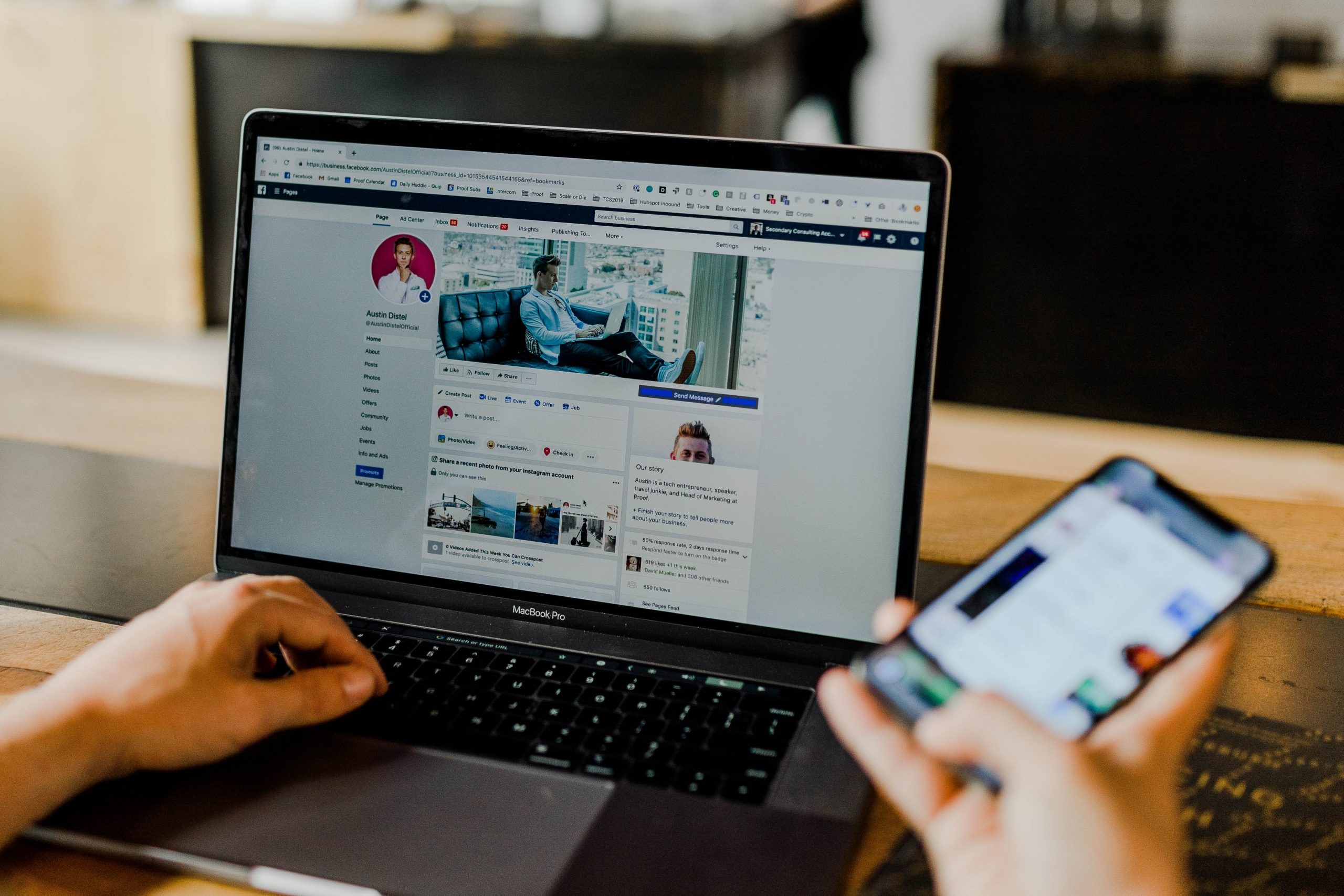
Influencer Marketing: How Social Media’s Influence on PR Benefits Your Brand
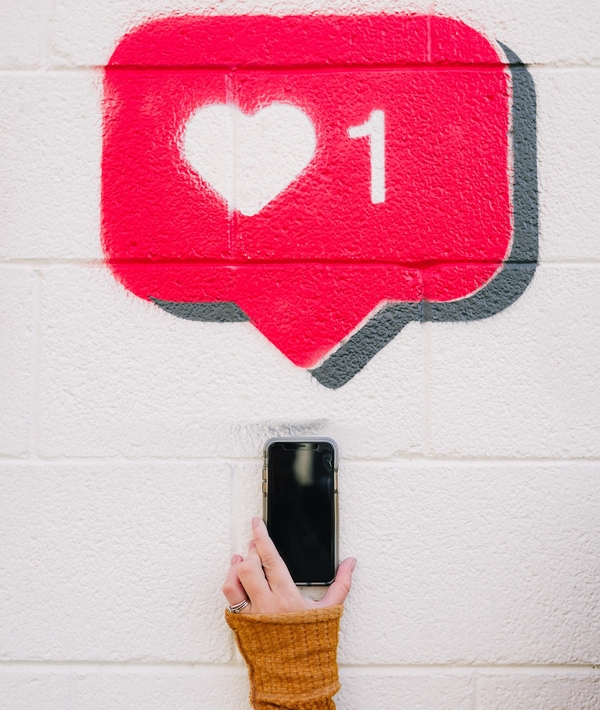
Gone are the days of painstaking research to build accurate media lists, of phone pitches, of basing announcements on publication dates, and of waiting, sometimes for months, to see if you were published via press clips received – gasp – by mail! As social media has evolved, it has elevated PR right along with it to the cheers of us professionals and the benefit of the brands we represent. So what is influencer marketing, and how does social media’s influence on PR benefit your brand? Here’s how.
The Purpose of PR
The Public Relations Society of America (PRSA) defines PR as “a strategic communication process that builds mutually beneficial relationships between organizations and their publics.” You do this by influencing, engaging, and building a positive relationship and/or image with your audience.
Many confuse PR with marketing, but it’s actually quite different. One big difference is in the amount of control you have over the narrative. In marketing, you pay to place an ad with your message; in PR, the amount of coverage, and in essence, your brand’s perception depends solely on your access to and/or relationship with the media. Or, at least it did…before social media.
Using Social Media in PR
Essentially, social media helps us to break down the invisible wall that once stood between brands and their audience(s). It’s no longer just about going through the media with your story and praying for the best. Social media can help you to meet your brand’s PR goals by:
- Working with Influencers – These people give your brand a voice in a way neither you nor a media story could do on its own. Influencers have huge followings that you can tap into to promote your products or services and help with reputation management.
- Social Listening – PR was more reactionary in the past, but with social media, you can keep your finger on the pulse of public perception of your brand. This enables you to proactively respond to any issues that might come up and better understand your customers in general.
- Using Your Platform(s) – Again, it’s about controlling the narrative as best you can. Social media can help you do that much more swiftly, if not immediately when necessary. Today’s news cycle is 24/7, so getting your story on social platforms can also influence the angle of media coverage as journalists do their share of social listening as well.
- Creating Real Relationships – Social media allows you to engage your audience directly with content that’s not only newsworthy but also important to their needs and where they are in the sales cycle. Think blogs, how-to guides, FAQs, and even related content that ties with your brand that could help them.
- Improving Media Relations– Social media is an integral part of PR now, but it doesn’t replace the importance of good media relationships. It can make that easier, however. Most journalists are active on social media and publicly list their handles. You can use this to learn more about their beats, when they need resources, how they prefer to work, as well as their personal and professional interests. Depending on your industry, you could include bloggers in this as well!
All this being said, be careful with a do-it-yourself PR strategy. It’s certainly easy enough to post, but appropriate messaging, knowing how to work with influencers and media, social listening savvy, and the ability to effectively measure results is key.
R team has extensive PR experience, and we’d love to help your brand. See how by clicking HERE to schedule a FREE Discovery Call Today!

4 Reasons a Crisis Communications Plan is Essential to Any Business

Although we’re well into the new year, it’s safe to say we’re probably all still a little shell-shocked from the craziness of 2020. Not just personally but in business as well. Sure, we’re optimistically planning ahead, but if there’s ever been a time to take the familiar idiom, “hope for the best and prepare for the worst” to heart, it’s now. R view is that having a crisis communication plan is a key to doing just that. Here’s why.
What Is A Crisis Communication Plan?
Essentially, a crisis communication plan is your strategic approach to responding to an unanticipated event that could disrupt your business operations and/or damage your brand reputation. It could be a product recall, customer injury, employee misconduct or a security breach. But natural disasters and, as we’ve recently learned, pandemics can certainly qualify as a crisis for businesses too!
Why Crisis Communications is Essential to Your Business
Quite simply, s@%t happens! You can think of a crisis communications plan like insurance in a way - a safety net that’s there for you just in case. When navigating your business through the unexpected, here’s why a crisis communications plan is essential:
- You won’t be caught off guard – When a crisis hits, time is essential. The longer you take to respond the quicker trust in your brand erodes, or at the very least, confusion will keep customers away. With a crisis communication plan in place, you’ll be able to provide transparency and the most appropriate messaging right away.
- You’ll be able to focus on resolving the crisis – In a crisis, it’s all hands on deck, right? Making it nearly impossible to prepare your communications plan and manage the crisis effectively at the same time. By preparing ahead of time, everyone knows their role in communicating, what steps to take and who to communicate with, freeing up the rest of your team to deal with the crisis itself.
- You’ll be able to control the narrative – One thing we in the PR industry know, is that the first message that’s out there is the stickiest, so to speak. It’s so much harder to change perception than to drive the message initially. Trial by social media is all too common these days and an effective crisis communication plan can help you get the right message to the right people instead of the wrong one going viral.
- Done right, you could improve your reputation – Warren Buffet once said, "It takes 20 years to build a reputation and five minutes to ruin it.” Yikes, but true. On the flip side, as we’ve seen over the last year, businesses who are authentic, honest and open the lines of communication have been the ones who have thrived in spite of the circumstances.
Check out R Take on Crisis Communications During COVID-19 and Beyond for tips that can be applied to any unanticipated situation. Or, click HERE to schedule a FREE 15 min Discovery Call and let’s get started on your crisis communications plan together!

R Marketing Plan Steps for a Successful New Year

It's a new year and that means you should be doing your marketing planning NOW. With last year fresh on your mind and the promise of this year ahead, this is the perfect time. Plus, most businesses are slower at the beginning of the year giving you more opportunity to reflect and plan. Not to mention trying to play catch-up later in the year can really limit your options for business growth. So, with all systems go, R tips can help you successfully map out your marketing plan steps.
Marketing Plan Steps to Include
Throwing it against the wall to see what sticks is as bad of an idea for spaghetti as it is your marketing. You must be strategic, or much like the spaghetti, you’ll just have a mess. Instead, R marketing plan steps include:
- Know who you are – We’re talking about your brand as it’s the foundation from which you will build your plan. Be able to answer these questions clearly: What do you do? What are your products/services? Who is your target audience? What is your promise to customers (value proposition)? What sets you apart (your positioning)?
- Identify what you want to do – With your brand identity firmly cemented you can begin identifying marketing objectives. Drive leads, convert more leads to customers, increase awareness, upsell or cross sell customers, launch a new product or service, and/or increase customer satisfaction are common ones, but here’s the key: you have to make it quantifiable to be able to measure success. Here’s another key: you can’t do everything, pick two or three to focus on.
- Take stock – This is an often-overlooked step but before you begin any new marketing campaigns, it’s important to take stock of what you’ve already done or are doing currently. Look at your social media, content marketing, SEO, ads, and public relations activities with the goal not only to avoid duplication of effort but also to see what you might improve. Also, make sure to perform a competitive analysis to get a good handle on your competitors’ strengths and weaknesses.
- Determine how you’ll get there – Now for the fun! What tools will you use to achieve your marketing goals? There are endless options available, but this is where a solid understanding of your target audience(s) comes in as quite simply, you need to be where they are. What’s more, keep in mind those tools may change throughout the sales cycle. For example, social media may pull in leads while email helps you to nurture them. Your content will likely also need to change throughout the sales cycle so you’ll need to flesh out what message to promote when.
- Find out how you did – We talked about the importance of quantifiable goals above and this is where that really comes into play. Google Analytics and Search Console are ideal to measure website traffic; where it’s coming from, visit length, and conversions. You can measure social media through the individual properties (Facebook, Twitter, Instagram, etc.) and can measure email metrics through your platform too. Or, tools like Hubspot can bring it all together. For PR, media impressions are key.
More on Measuring Your Goals
Not only is it important to measure the results of your marketing plan based on your goals, but you need to do it on an ongoing basis! So many businesses neglect this step. A marketing plan isn’t something you can set and forget. Success depends on your ability to optimize throughout the year as you learn more about what works and what doesn’t.
Leave it To the Experts
This can be overwhelming - we get it! Not everyone has a dedicated marketing department to take this on and for many of our clients, marketing is not their area of expertise. You want your marketing dollars to pay off, but not at the expense of what you need to be focusing on – running your business! That’s where we come in!
R goal is to help clients in industries such as restaurant, hospitality, retail, health and wellness, business, non-profit and more to achieve theirs through:
- Marketing Strategy and Campaign Creation
- Public Relations
- Social Media
- Event Management
- Content Marketing
- Creative Services
- Analytics
For R help your marketing plan, click HERE to schedule a FREE Discovery Call today!
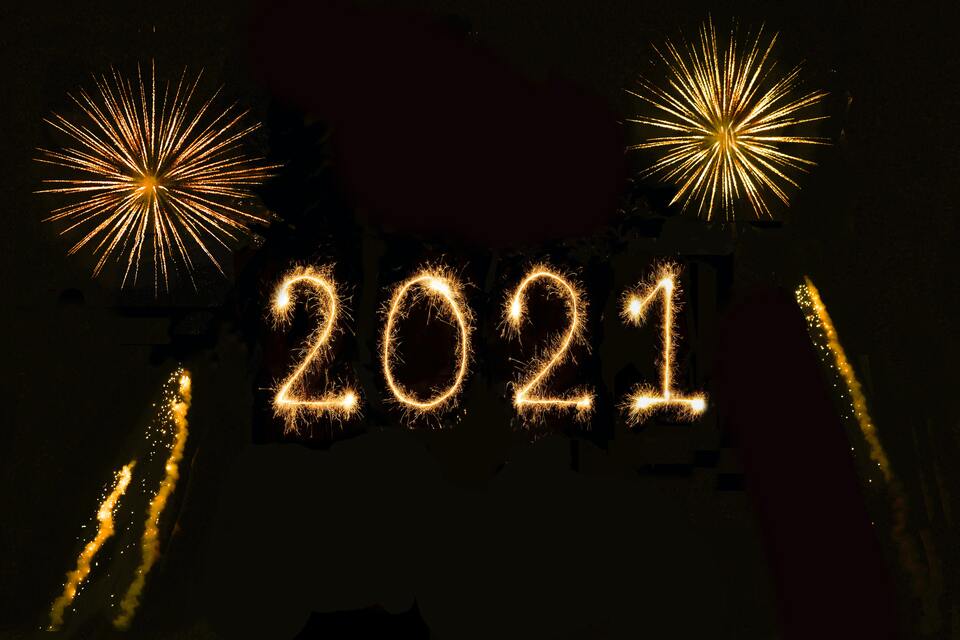
The Big Benefits of a Boutique Public Relations Firm
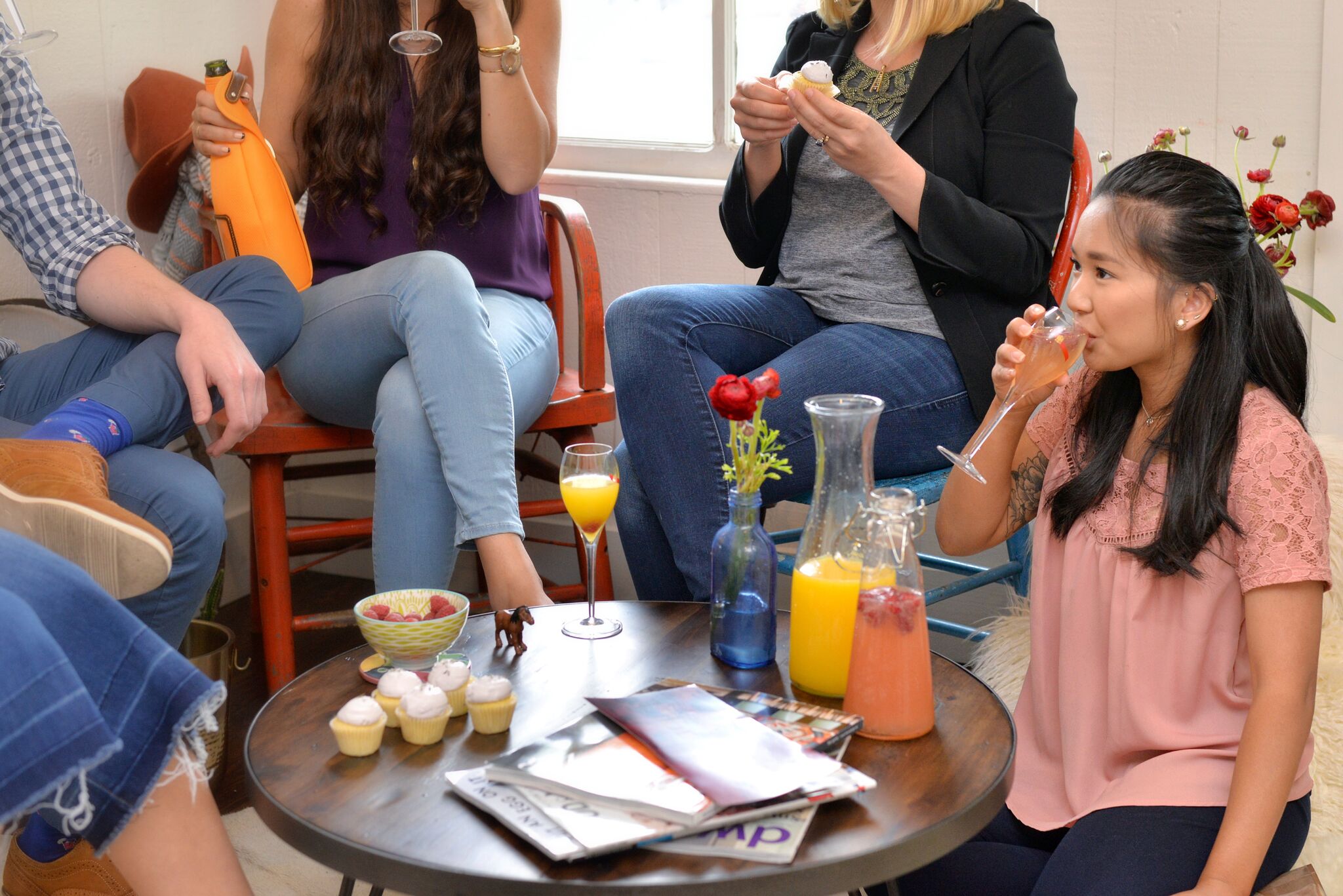
If you’re looking to make a big splash for your event, product, or service, you think you need a big Public Relations agency to do it, right? Not even close. Much like how there can be too many cooks in the kitchen, the same can apply here too. When there are too many people in the PR process it can quickly bellyflop your vision and your budget. Here’s how a boutique public relations firm can benefit you.
Boutique Public Relations Firm, by Definition
So, ‘boutique’ isn’t just a fancy word for small, at least in the PR world. A boutique public relations firm is also one that is specialized or focused in a particular area of expertise. For example, R boutique public relations firm represents lifestyle brands including those in the restaurant, retail, hospitality, health and wellness, and startup industries.
Benefits of Boutique
You can expect these benefits in working with a boutique public relations firm:
- No Swapsies – It’s a common practice for large agencies to woo clients with their most senior account team, yet as the campaign moves along you find yourself handed off to junior team members to bring it to fruition. This doesn’t happen with a boutique firm; you work with exactly the team that inspired you to sign on with them in the first place; from beginning to end.
- Focused on You ( R business is Yours) – To put it bluntly, large agencies don’t need you as much, especially if they don’t see a lot of growth potential in the account. And the amount of effort spent on your campaign may reflect that. On the other hand, boutique public relations firms live and die by the relationships they create with their clients, so they are focused on doing their best for you, always.
- Fierce Flexibility – The larger an agency is the more bureaucracy you can expect, which means you’ll have to work within their system and schedule versus the other way around. Boutique firms have more freedom to be creative and can be more responsive. This creates an environment that’s naturally more collaborative and adaptive to your needs, more like an extension of your own team.
- More Splash for Your Buck – Large agencies are corporations with more overhead, so naturally what they charge reflects that. Plus, they’ll likely track and bill for every little thing; it’s more transaction-based. With a boutique public relations firm, you have a partnership in which you’re committed to the same goal – the success of your campaign and hopefully the success of many more in the future! As a result, the back and forth is viewed as part of the process! Not to mention, as a small business there’s much less overhead.
For R help with your next PR campaign, click HERE to schedule a FREE Discovery Call Today!

Give (& Get) with R Cause Marketing Campaigns

Cause marketing isn’t a new thing. It’s actually been around since Marriott Corporation partnered with the March of Dimes in the 1970s. But it may be more important today than ever. Not because causes are more important now, rather it’s more important for brands to support them. Why? Brands need a way to cut through the noise and connect with consumers on a more purposeful level. Doing good for others certainly fits that bill. Here are tips to get you started.
What is a Cause Marketing Campaign?
Cause marketing in and of itself is a cooperative effort between a for-profit brand and a non-profit for the mutual benefit of both. The benefits include increased connection with consumers and increased awareness of the cause as well as profit. A cause marketing campaign is the implementation of that effort with the goal to increase sales for the brand while also increasing money contributed to the non-profit.
Keep in mind that cause marketing campaigns don’t have to focus on just national or global causes. They can and should focus on local causes as well.
The Impact of Cause Marketing
So how much impact can cause marketing really have for brands? Quite a bit actually. In fact, a Mintel study shows that 73% of Americans say a company’s charitable giving affects their purchase decisions. Not only that, 50% of Americans say that they would switch to a company that supports a cause they believe in and that stat rises to 61% for Millennials (aged 24-41).
But it’s not just that consumers think it’s nice for brands to support causes. It’s increasingly becoming an expectation. That same Mintel study found that nearly two-thirds of Americans believe it is a company’s responsibility to give back (65%), while around half expect brands to improve the local community (53%).
Cause marketing has even become so important there’s an actual day devoted to it–Giving Tuesday. It’s a day that not only encourages all people to do good by donating to causes that are important to them, many brands partner with those nonprofits to match a certain percentage of donations they receive that day. It’s hugely impactful for consumers, nonprofits, and brands alike!
How to Do Cause Marketing
So, how do you create a successful cause marketing campaign? Start right here:
- Authenticity: We encourage all R clients to give back with a cause that speaks to their mission because, above all, your campaign must be authentic to resonate with consumers. Ask yourself, is there a non-profit that aligns with your goals as an organization?
- Audience: Next, consider the target audience for your brand. Are there causes that are more likely to speak to them and/or that they may already support? Ideally, the cause that you choose will align with your mission and the interests of your target audience.
- Collaboration: Most non-profits are thrilled for any support, but collaboration can maximize the effectiveness of your campaign as it can give you insight on what’s worked and what hasn’t in the past. Not to mention to help you get the message right!
- Timing: Not only when to launch but also the duration of the campaign. Typically up to 2 weeks gives you enough time to generate excitement and to hold your consumer’s attention. Then consider if there a certain time of year in which your cause is more urgent?
- Branding: Go beyond simply putting a non-profit’s logo on your marketing materials. Think about a cohesive strategy across all your platforms. Create a hashtag and content to share as well as perhaps even a logo and/or specific design for the campaign. The idea is for the campaign to stand out while complementing your brand and keeping consumers engaged.
- Call to Action: Consumers need to be able to quickly understand the ‘why’ for the campaign and what you want them to do. So, make sure there is a clear call to action at each touchpoint. This will also help you quantify the success of the campaign later.
- Share the Results: Another connection builder with consumers is to share the results of the campaign as well as its impact on the cause. And thank them for their contributions! This creates trust that you did what you said you would, and who doesn’t like appreciation?
Cause Marketing Campaigns in Action
Here are some favorite cause marketing campaigns from R clients:
- Peg Leg Porker: Teaming up with Operation BBQ Relief to serve meals to first responders
- Hearne Dry Goods: A portion of all proceeds support Lwala Community Alliance
- Las Palmas Mexican Restaurant: St. Jude Children’s Research Hospital fundraiser
- Bambinos Boutique: Donates a portion of proceeds from events to Hand to Hold
This year’s Giving Tuesday is coming up on December 1 which means now is the perfect time to create your cause marketing campaign. We’d love to help—click HERE to schedule a FREE Discovery Call today!

20 Top Nashville Influencers (and what makes them so important to brands)
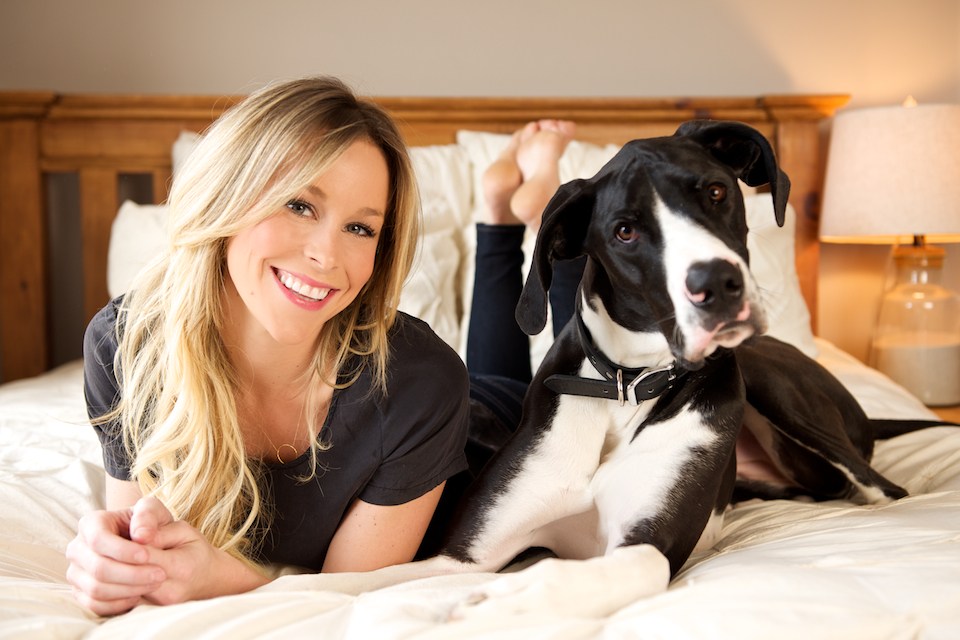 Image by Style Blueprint
Image by Style Blueprint
Merriam-Webster defines an influencer as someone who inspires or guides the actions of others, or more specifically, as someone who is able to generate interest in something by posting about it on social media. Brands have taken notice and influencer marketing is now a key component of social media strategy. How do they help and who are the top Nashville influencers? Find out here.
The Influence of Influencers
According to We Are Social, 3.484 billion people actively use social media (that’s 45 percent of the world’s population if you’re counting!). What we can pretty much all attest to is that we’re sick of being marketed at from every direction, no matter how targeted it may be. Enter influencers.
Early on, influencers were primarily celebrities. Anyone ever bought anything a Kardashian plugged? You don’t have to admit it, The Guardian shares the proof. But celebrity endorsements can be hard to come by, and can cost you big.
Luckily, there are plenty of “regular people” who have built a reputation for their knowledge and expertise on specific topics or specific categories through regular social media posts. They’re seen more as trusted friends and peers and are able to generate an engaged following that pays close attention to their recommendations. While they may not have the millions of followers, these influencers can potentially drive an average of 16x higher engagement rates than celebrities , according to The Realtime Report.
Top Nashville Influencers
If you’re a lifestyle brand in Nashville looking to connect with consumers and establish trust, influencer marketing may be just the way to go. Here are our top 20 Nashville influencers (in no particular order):
- @hunterpremo | Hunter Premo | 246k followers
Nashville native Hunter Premo is the daughter of one of the city’s most sought-after makeup artists. But she’s more into fashion, sharing her boho style – and her life – with tens of thousands of followers.
- @malloryervin | Mallory Ervin | 543k followers
After competing in Miss America as well as The Amazing Race (and gaining a following from that), Ervin is an influencer on topics that range from marriage and kids to fashion and female empowerment.
- @nashvillefoodfan | Kate Davis | 97.1k followers
Born out of a desire to share her love of Nashville’s culinary scene, Davis’ Instagram has now become the place to inspire foodies or anyone exploring local restaurants to try.
- @livingwithlandyn | Living With Landyn | 270k followers
This influencer and blogger shares her tips on food, fashion, and family plus offers tons of “swipe up” retail codes and life hacks.
- @happilygrey | Mary Lawless Lee | 54.8k followers
The Happily Grey founder posts beautifully curated pictures from her life as a fashionista, businesswoman, wife, new mom, and dog lover.
- @passportsandgrub | Tomiko | 10.8k followers
Tomiko provides all kinds of travel tips and she also works to help brands shift the culture on diversity in tourism.
- @iamreneewatkins | Renee Watkins | 68.2k followers
This yoga instructor and doula posts fitness and beauty tips as well as body-positive messages and book recommendations.
- @cameronpremo | Cameron Premo | 15.9k followers
Husband to Hunter Premo, this photographer/videographer is an influencer in his own right on topics that include adventure, style, and chivalry for the modern gentleman.
- @erinoprea | Erin Oprea | 182.7k followers
She’s a trainer to local celebrities with a feed that shares workout tips, healthy recipes, and videos from her weekly Saturday night dance party with husband Sean.
- @emilyblincoe | Emily Blincoe | 362.5k followers
This photographer came to Nashville by way of Austin and posts snaps of everything from walks in the park with her pups to front yard hangs and the beauty of everyday life here.
- @wickedtasty | Dan Burkard | 9.4k followers
This power duo of Michelle and Dan came to Nashville by way of New England and we are all the more hungry for their food photos for it! Their posts and snaps of recipes, top lists of fab food finds, happy hours and more are not to be missed!
- @nashgirleats | Holly | 21.4k followers
Holly is a nurse practitioner who loves exploring some of the hottest restaurants and dishes in Nashville. She also shares some of her own dishes on her feed.
- @the_ moody_foody | Josh | 10.2 followers
Josh’s blog reviews the best restaurants in Nashville and offers fun insights into the dining scene while all the mouth-watering finds are shared on Insta.
- @nashvillewifestyles | Ashley Houston | 132k followers
Ashley is a girl mom (and a dog mom) with a lifestyle blog that dishes on food, the latest fashion trends, parenting tips and life in Nashville where she’s lived for 10 years.
- @thehungryleopard | Blair Beaty | 5.5k followers
Blair overcame hunger herself and now shares her foodie experiences across Nashville and beyond.
- @blonde_voyage_nashville | Courtney Hood | 13.4k followers
This native Nashvillian blogs about food and lifestyle as she brings us along on her epic travel adventures near and far.
- @nashvillevibin | Neysha Clevenger | 6.7k followers
She’s your go-to girl for all things Nashville sharing delicious food as well as local clothing and cool snaps of our awesome city!
- @pocketsandbows | Brittany | 48.5k followers
Brittany is a creator, influencer and stylist who delivers daily inspiration for luxe plus fashion on Instagram and YouTube.
- @fabglance | Melissa | 11.5k followers
Melissa is a digital strategy expert who brings authentic storytelling back to social media. In her spare time she shares the best plus size fashion trends and tips.
- @lauraleabalanced | Laura Lee | 86.4k followers
Chef Laura Lee has a background in health-related cooking and shares healthy, delicious recipes, meal plans and insights into her.
For R help with influencer marketing, click HERE to schedule a FREE Discovery Call today!
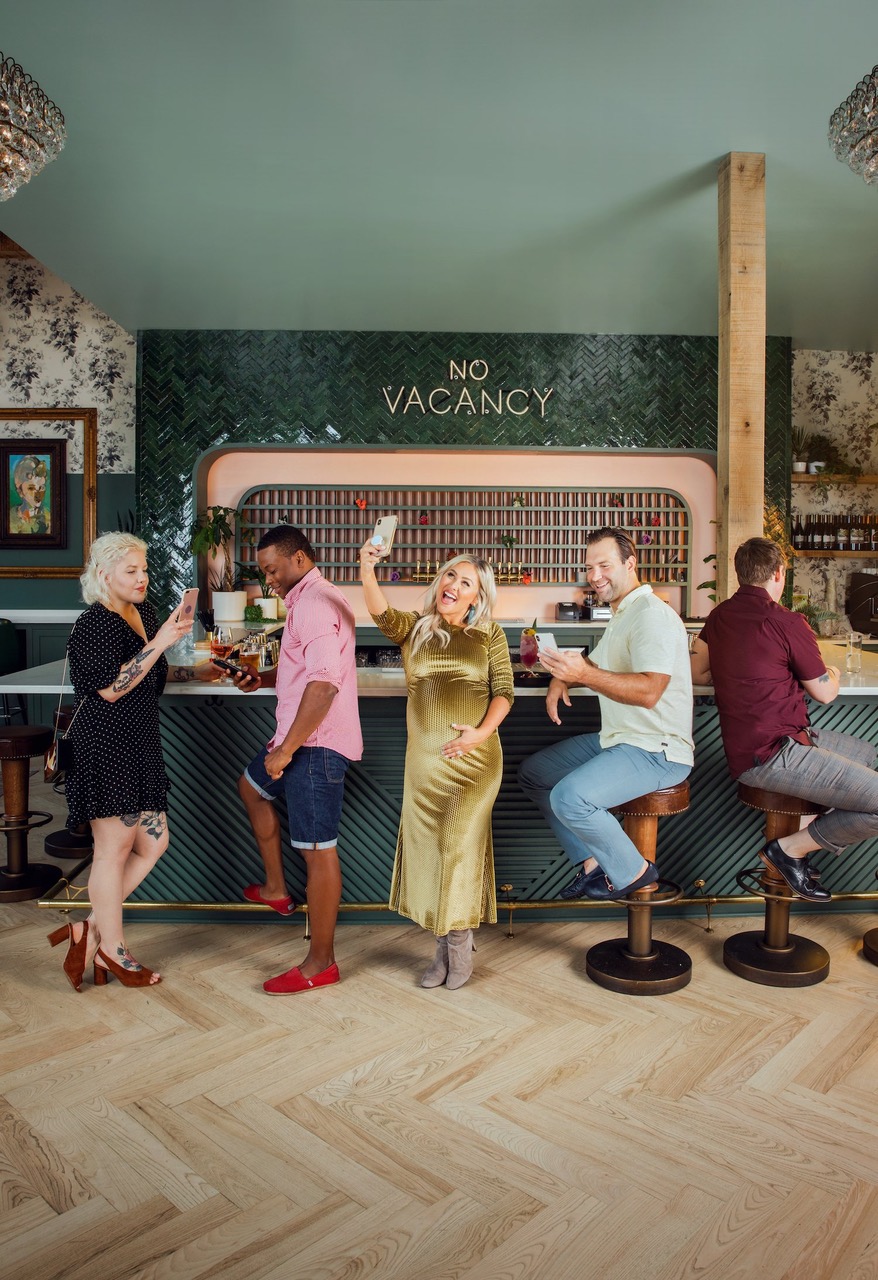 Image by Nashville Lifestyles
Image by Nashville Lifestyles
R Checklist for Creating Top Virtual Events in Nashville
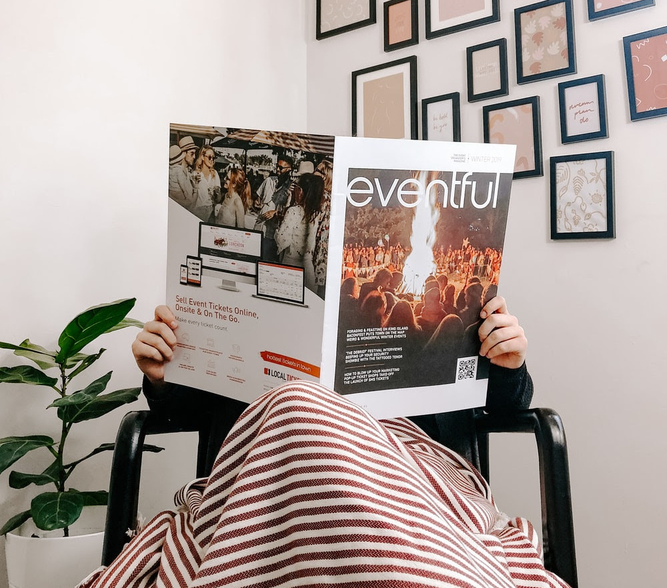
It’s pretty much inevitable at this point that if you’re planning to host an event anytime soon, you gotta go virtual. But it’s not as easy as it sounds. Unless you have R checklist for creating top virtual events in Nashville, of course!
A Virtual History Lesson
We get it; nothing truly replaces the experience of meeting face-to-face with prospects, clients, and colleagues, but since COVID-19 began virtual events have been as much of a necessity as our daily coffee fix. In fact, virtual events have been around for longer than you may think for that very reason. The first webcam was actually created in 1993, by University of Cambridge computer scientists who were too ‘busy’ to physically check to see when the coffee, located in another lab, was ready. So, they created a webcam to livestream its progress. Priorities, right!?!
Virtual Events Today
In all seriousness, today’s virtual events can range from small groups to thousands of attendees, and the most common types of events include:
- Question and answer sessions
- Tutorials and/or classes
- Training
- Tours
- Interviews
- Performances
- Conferences
- Networking events
R Top Virtual Events Checklist
Anyone who’s ever planned an event knows how much goes into it. Success doesn’t come easily with virtual events either, but that doesn’t mean it shouldn’t look seamless! Here’s how:
Get a Game Plan – And start early! Think about:
- What you want to achieve
- Who your audience will be
- The experience you want to offer
- What content would be relevant to them, whether you want a live or on-demand event or both
- If you’ll require registration
- If you want to partner with advertisers and/or sponsors, as well as how you define success and how you will track those metrics.
And don’t forget to create an event budget.
Work Out the Right Time – From working out time zones to ensuring you’re not competing with other similar events to doing some research on when your audience is typically online; choosing the right time and date is much more important (and much more involved) than you may initially think.
Pick the Right Platform – This really depends are what type of event your hosting. For live-tweeting events, you might use Reddit or Slack (don’t forget the hashtag!). Webinar platforms include Zoom, as well as Livestorm and YouTube Livestream. Social livestreams include Instagram Live, Facebook Live and LinkedIn Live. For conferences there’s 6connex, HeySummit and Run the World.
Promote, Promote, Promote – There’s so much competing for your audience’s time, including other virtual events. So, make sure potential attendees know the details and WHY they should attend. Then promote far and wide using email, social media, and on sites like Eventbrite. What’s more, ramp up your efforts starting 2-3 weeks out as many won’t commit until then. And don’t forget to enlist speakers as ambassadors for the event in addition to creating an event hashtag and a dedicated landing page.
Test Things Out – Rehearsals are super important because it’s far too easy for attendees to bail if your virtual event is a pain. Test internet connections, prepare backups of presentations, and make sure your speakers are comfortable with the platform. Depending on the size of the event, you might even have some tech support available for attendees should they run into trouble.
Create Opportunities to Engage – Of course we’ve never done this ourselves, but we’ve all ‘heard’ of multitasking or social media surfing during a virtual event. Gasp! The easiest way to avoid people tuning out is to keep them engaged by incorporating a poll or chat tool (make sure to have a moderator) and/or encourage live-tweeting. Don’t forget to ask for feedback at the end of the event so you can improve for next time too!
Virtual Events That Got It Right
With so many virtual events out there right now, there are plenty of hits and misses. But, here are some of R favorite successful events:
- Skift’s Online Summit - Travel's Path Forward – The first in their series of travel summits, the event had multiple speakers and guests had the opportunity to ask questions. Recordings of the series can be found here.
- Lululemon has been hosting a monthly online book club with live discussions on Instagram that feature the authors. Each book club pick focuses on a health and wellness topic and the discussions are moderated by one of their global ambassadors.
- Garth Brooks and Trisha Yearwood hosted a series of free livestream concerts on Facebook Live with the hashtag #GarthRequestLive where they played requests that fans put in the comments. We simply had to include a Nashville success story right?
- Silverado Vineyards came up with the concept of a virtual wine taste test to unveil a new product. They sent wines to their best customers and invited them to a virtual tasting while their experts discussed the wines.
- Washington Performing Arts Gala – Their gala was scheduled for March and instead of canceling it they turned it into a virtual livestream experience in only 3 days! And even created a webinar to document how it went!
Top Virtual Events in Nashville Coming Up
- Music City Bandwidth – 30 livestreamed concerts between September 14 – October 31
- R clients at Liquor Lab have gone full-on virtual with their cocktail events—that’s right, the happy hour you always dreamed of, without leaving the house or your PJs!
- Nashville Area Chamber and Partnership 2020 Annual Celebration – Tuesday, October 13
- Nashville Zoo Virtual Programs – Multiple Dates, October - December
- 2020 Revenge of the Bird Virtual 5k Turkey Trot – November 1 – December 12
- Nashville Public Library Literary Award Gala – Saturday, November 14, 2020
- Virtual Nashville Vacation Package - Not necessarily an event, but a virtual experience all the same. What a cool way to explore Nashville!
For R help in planning your virtual events in Nashville or beyond, click HERE to schedule a FREE Discovery Call today!

R is for R(e)-opening! 6 Tips to Help You Reopen Seamlessly
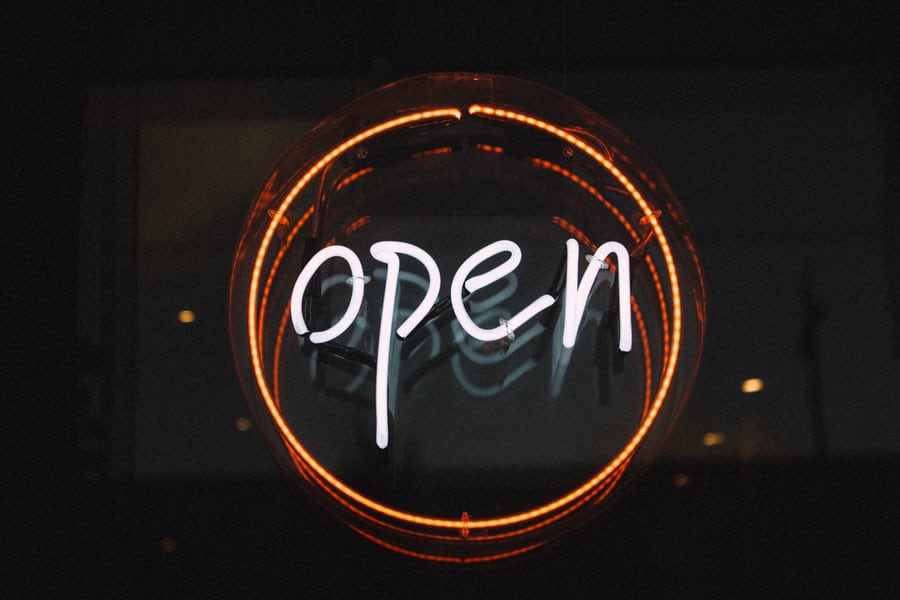 Raise your hand if you are a business owner who recently had your entire world turned upside-down? For us, we’ve been in the trenches with R clients as they’ve shuttered their doors, launched take-out menus, and now as many look to Re-open businesses, which in some cases, have been around for more than 20 years. Wow, things can change with the blink of an eye, can’t they? First, we want to say, whether you’re a client, a friend, or new to the RPR blog, we are here with you. Seriously, this is a time to band together and to be flexible, forgiving, and open to the new world we live in—a touchless, mask-wearing world. We see you and your pretty eyes in those masks, and we R here to help! Below, we’ve pulled together six tips to help you reopen and thrive in this ever-changing world.
Raise your hand if you are a business owner who recently had your entire world turned upside-down? For us, we’ve been in the trenches with R clients as they’ve shuttered their doors, launched take-out menus, and now as many look to Re-open businesses, which in some cases, have been around for more than 20 years. Wow, things can change with the blink of an eye, can’t they? First, we want to say, whether you’re a client, a friend, or new to the RPR blog, we are here with you. Seriously, this is a time to band together and to be flexible, forgiving, and open to the new world we live in—a touchless, mask-wearing world. We see you and your pretty eyes in those masks, and we R here to help! Below, we’ve pulled together six tips to help you reopen and thrive in this ever-changing world.
Make a plan. For many of you, the new rules, regulations, and stages of reopening are hard to keep up with—they change daily, and just as you seem to catch your groove something new pops up. Deciding when to open, re-open, who to bring on board, and what to do with your furloughed staff can be mind-boggling, let alone thinking about your marketing messages during times like these. First things first, take a deep breath and sit down. Let’s write a plan—a new plan—here’s what we need to include:
- Dates and guidelines for your city, what you are going to do, and when you want to do it. Start with a projected date of opening at (25% 50% 100%) capacity and re-hiring (XXX) employees to get things up and going. Call your staff even if they are furloughed, most probably want to come back ASAP. They most likely miss you—and their jobs—too.
- Once you have a general outline, set up a Zoom call with your crew, review the plan you have and let them know, yes, things are changing so please be patient and flexible, and that you are, too!
- Share your plan with your staff. This may involve retraining them on new systems for cleaning, for customer service, for everything (it will be like you just opened!). We know it's frustrating, but take the retraining seriously as the last thing you want is a customer to video your staff NOT meeting new guidelines (if you need help in the HR department, let us know—we have resources to guide you).
Make a Plan B. If we can learn anything from the past few months, it’s that we all need a Plan B. There are a lot of what-ifs in the world of business right now, so be PROACTIVE vs. reactive, meaning prepare for things to continue to operate under a “new normal” and/or potentially even revert to stay-at-home orders, but this time you will be ready to make your business marketable!
Prepare for things to be touchless. Many places plan on keeping curbside shopping, free shipping, new website features for online ordering, and more from the past few months. We can say most of our lives are now MORE THAN EVER online, so get those online shops and websites up to snuff. (Psst: we can help here, too.)
Think outside of the box. Now is the time to offer up something new—to your menus, to your websites, to your business. We are seeing some make masks, some make new kinds of menu items (cue in family-style take-out meals), and some make new kinds of lemonade from these lemons. Perhaps this is the time your business thrives in a way it never has before, because, really, why not?
Take this time as a lesson on diversifying your offerings, adding merch, launching new product packaging, making your site shoppable … whatever it takes! Let us know if you need more suggestions or want help executing—we’re here to help!
And, as always, be patient and be kind. Your audience, clients, and customers are all in a state of unknown, and are adjusting, too! Have your social messaging be bright, informative, and positive. Remember your words have POWER, so use them accordingly!
